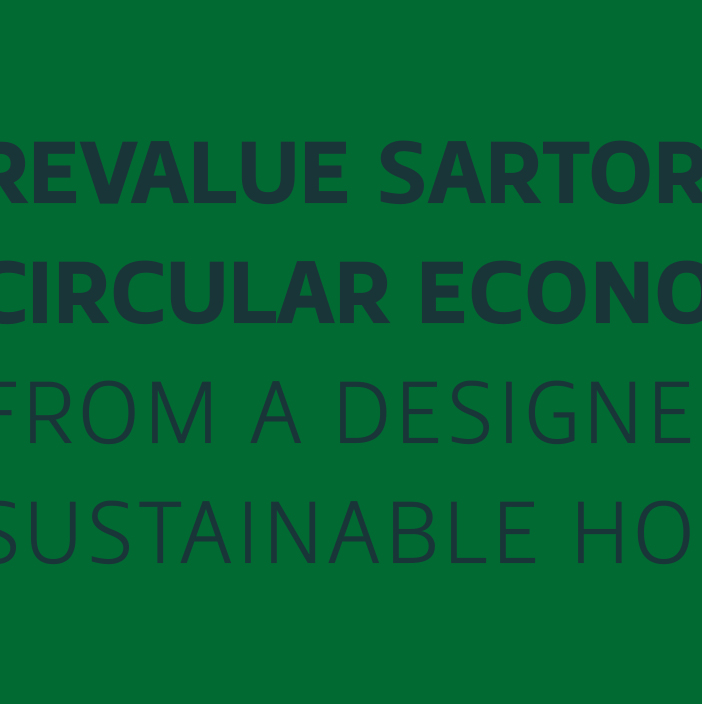Revalue sartorial culture for a circular economy The thread of ethics, from a designed needle towards a sustainable horizon
Main Article Content
Abstract
This study raises the role that sartorial culture can play in slowing the impact of environmental pollution caused by the fashion industry. The objective is to transform design education with an ecological interdisciplinary pedagogy. The methodology focuses on reviewing and analysing the existing literature on the topic, examining proposals from experts and sectoral institutional contributions. The results highlight the importance of a circular approach in fashion, encouraging reuse, recycling, and extending the useful life of garments. Within the framework of a New Bauhaus – arising from the South-South – the aim is to promote conscious and sustainable fashion that integrates aesthetics, functionality, and sustainability under a drive towards circularity, social inclusion, and fair trade, where Fashion businesses make their footprint transparent. It is proposed to revalue the art of tailoring, sewing techniques and the craft, combining them with technology that allows maintaining quality and innovating in the design and production process in such a way that a search for synergy between science, technique, art and service within a circular economy, where the protagonists reflect on the manufacturing processes and the negative impact of excessive consumption that significantly affects the environment.
Article Details
References
Banco Mundial. (2019). ¿Cuánto le cuestan nuestros armarios al medio ambiente? https://www.bancomundial.org/es/news/feature/2019/09/23/costo-moda-medio-ambiente
Bandyopadhyay, A., Chatterjee, A., Banerjee, D., Awasthi, K., & Bhatt, S. (2019). Guidebook: Mobilising private sector finance for climate change adaptation. Deutsche Gesellschaft für Internationale Zusammenarbeit (GIZ) GmbH. https://weadapt.org/knowledge-base/climate-finance/guidebook-mobilising-private-sector-finance-for-climate-change-adaptation/
Black, S. (2008). Sustainable Fashion: Consumer Motivations and Potential for Durable Fashion. Fashion Practice, 1(2), 235-255.
Comisión Mundial sobre Medio Ambiente y Desarrollo de las Naciones Unidas (1987). Informe Nuestro futuro común. https://www.ecominga.uqam.ca/PDF/BIBLIOGRAPHIE/GUIDE_LECTURE_1/CMMAD-Informe-Comision-Brundtland-sobre-Medio-Ambiente-Desarrollo.pdf
Fletcher, K. (2008). Sustainable Fashion and Textiles: Design Journeys. Routledge https://doi.org/10.4324/9781849772778
Fletcher, K. (2016). Craft of Use. Post-Growth Fashion. Routledge. https://doi.org/10.4324/9781315647371
Fletcher, K. & Grose, L. (2012). Fashion and Sustainability: Design for Change. Laurence King Publishing
Fletcher, K. & Tham, M. (2019). Earth Logic Fashion Action Research Plan. JJ Charitable Trust. https://earthlogic.info/wp-content/uploads/2021/03/Earth-Logic-E-version.pdf
Gwilt, A., & Rissanen, T. (2011). Shaping sustainable fashion: Changing the way we make and use. Earthscan.
Lopez, C. A. (2022). Vestir al planeta con sostenibilidad: Un desafío para la economía circular. Quality 255, 25-30. https://qualitymagazine.org/wp-content/uploads/2022/09/255_Esp-2.pdf
Quantis (2018) Measuring Fashion. Environmental Impact of the Global Apparel and Footwear Industries Study. https://quantis.com/wp-content/uploads/2018/03/measuringfashion_globalimpactstudy_full-report_quantis_cwf_2018a.pdf
Tham, M. (2013). Style and Fashion. WOW Talks [Youtube] https://www.youtube.com/watch?v=pnL9GrkT1fg
Tham, M. (2015a). Creative Resilience Thinking in Textiles and Fashion. In J. Jefferies, H. Clark, H, & D. W. Conroy (Eds.) The handbook of textile culture (pp. 225-240). Bloomsbury Publishing.
Tham, M. (2015b). The futures of futures studies in fashion. In K. Fletcher and M. Tham (eds), Routledge Handbook of Sustainability and Fashion (pp. 283-292). Routledge.
United Nations Environment Programme (2021). Adaptation Gap Report 2020. UNEP. https://www.unep.org/resources/adaptation-gap-report-2020
United Nations Educational Scientific and Cultural Organization (UNESCO) & United Nations Water (2020). United Nations World Water Development Report 2020: Water and Climate Change, UNESCO. https://www.climate-chance.org/en/library/rapport-mondial-des-nations-unies-sur-la-mise-en-valeur-des-ressources-en-eau-2020-leau-et-les-changements-climatiques/
United Nations Framework Convention on Climate Change (UNFCC) (2020). Yearbook of Global Climate Action 2020. UNFCC. https://www.climate-chance.org/en/library/yearbook-of-global-climate-action-2020-marrakech-partnership-for-global-climate-action/
Veneziani, M. (2012). Moda, Economía y Sociedad. Experimenta Libros / Nobuko.
von Busch, O. (2022) Making trouble: Design and material activism. Bloomsbury.


